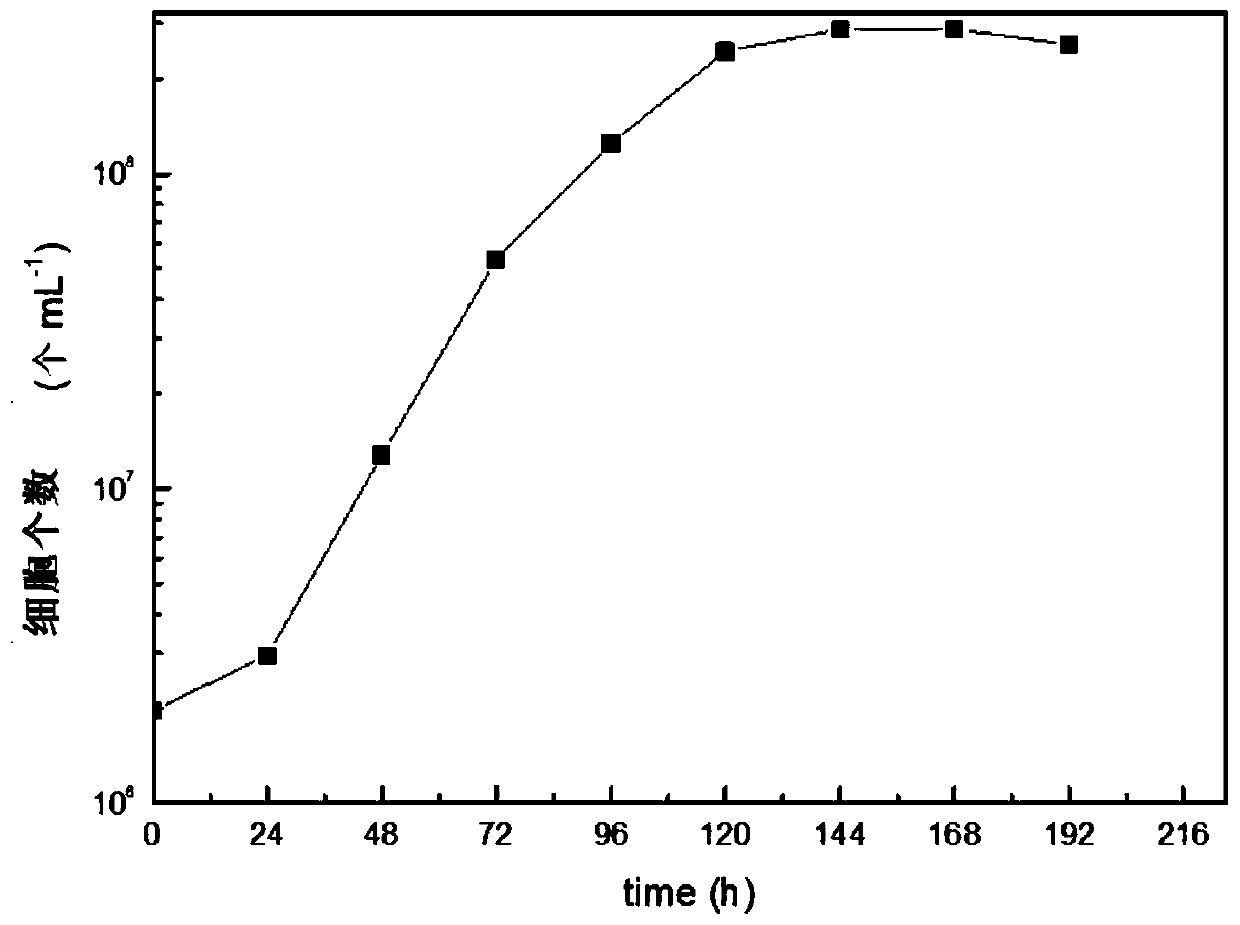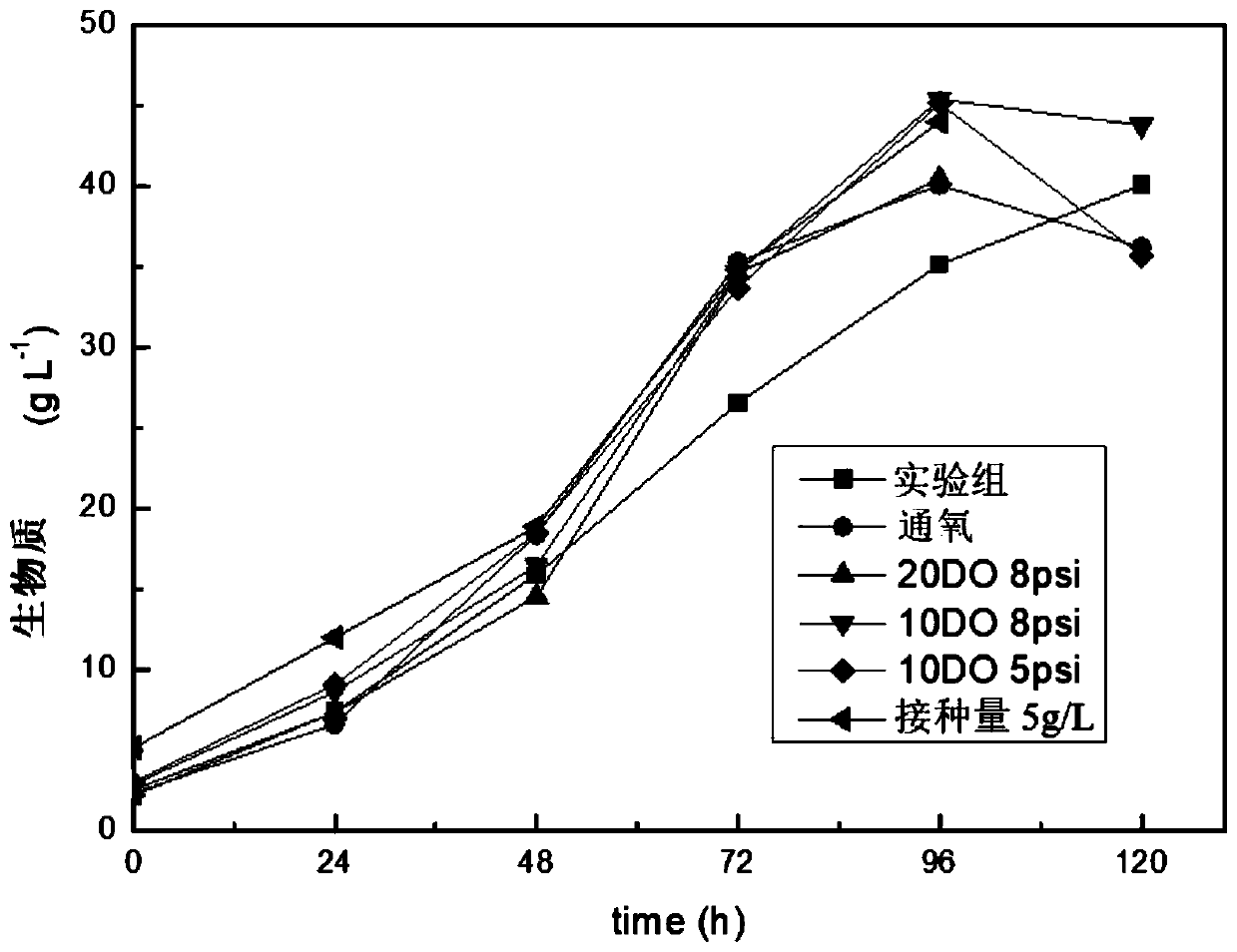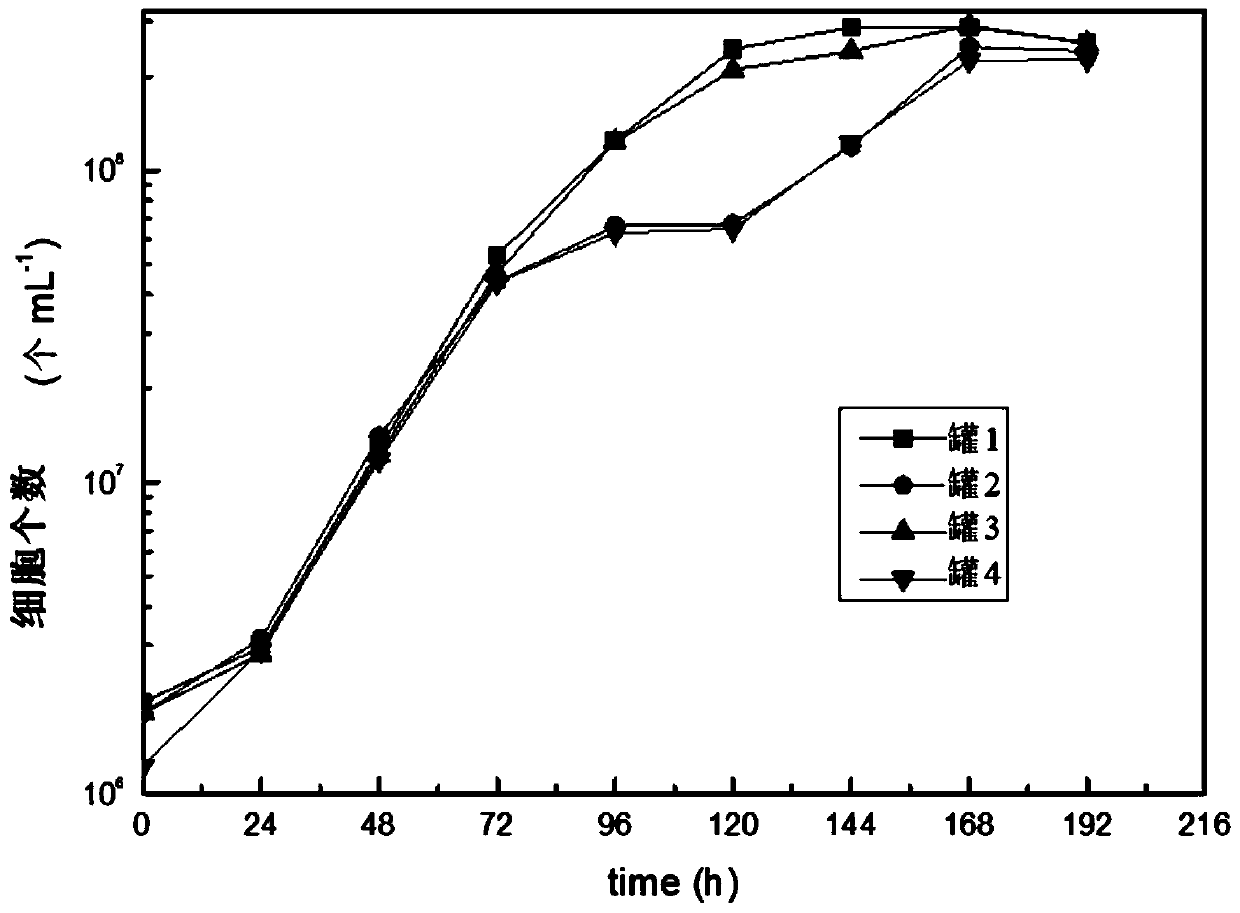Rapid culture method of chrysophyceae
A culture method and technology of golden algae, applied in the field of rapid cultivation of golden algae, can solve the problems of low culture density, slow growth rate of culture, difficulty in cultivating golden algae biomass to meet the requirements of industrial processing and application, and achieve energy saving, The effect of stable efficiency
- Summary
- Abstract
- Description
- Claims
- Application Information
AI Technical Summary
Problems solved by technology
Method used
Image
Examples
Embodiment 1
[0057] Chrysophytes were cultured in a 7.5 L, New Brunswick (NBS) BioFlo310 fermenter.
[0058] Cultivated in a 7.5L fermenter with this inventive method, the highest cell number can reach 2.88×10 8 Each mL, the cell biomass can reach 56g / L.
[0059] Step 1: Photoautotrophic pre-cultivation of seeds
[0060] (1) Prepare the seed culture medium according to Table 1, divide it into 1L Erlenmeyer flasks with a volume of 300mL, and sterilize at a high temperature of 121°C for 30 minutes.
[0061] (2) Inoculation, algae species Poteriochromonas malhamensis CMBB-01 was provided by the Institute of Hydrology, Chinese Academy of Sciences, Wuhan, with an inoculation volume of 10 mL.
[0062] (3) Culture for 7 days, culture temperature 25-28 ℃, light intensity 30-50 μmol photons m -2 the s -1 . When the seed color changes from golden yellow to dark brown, the dry weight can reach 2-3g / L.
[0063] Step 2: Fermentation tank culture
[0064] (1) Prepare fermenter culture medium a...
Embodiment 2
[0079] Chrysophytes were cultured in a 125 L, New Brunswick (NBS) BioFlo610 fermenter.
[0080] The enlarged culture is carried out on a 125L fermenter with the method of the invention, and the biomass of the golden algae cells can reach 45 g / L after 96 hours of culture.
[0081] Step 1: Seed Preparation
[0082] After cultivating 96h among the embodiment 1, by figure 1It can be seen that it is in the logarithmic phase and is suitable for vaccination. The golden algae at this time are taken out as the algal species of the present embodiment.
[0083] Step 2: Fermentation tank culture
[0084] (1) Prepare fermenter medium according to Table 2 (except ammonium chloride), calibrate the pH electrode, prepare 32 L per tank, fill 28 L, sterilize at 121 °C for 30 min. The mass ratio of carbon / nitrogen in the medium is 28:1.
[0085] (2) After the sterilization is completed, cool down, adjust the temperature to 28 ℃, rotate at 50 rpm, and ventilate for 4.0 L min -1 After that, c...
Embodiment 3
[0105] According to the culture method of Example 1, cultivate in a 7.5L fermenter, and set up the experimental group (tank 1 and tank 3) with vitamin addition and the control group (tank 2 and tank 4) without vitamin addition, as shown in the following table:
[0106]
[0107] The culture method, condition and operating steps of this embodiment are all carried out with reference to embodiment 1, and the experimental results are shown in image 3 . Depend on image 3 The statistical results show that:
[0108] ① by image 3 It can be seen that vitamin B was added to tank 1 and tank 3 at 44 h 1 : 0.375 mg / L, B H : 0.25mg / L, B 6 : 0.125 mg / L and B 12 : After 0.125 mg / L (vitamin concentration after adding to the culture system), the growth rate began to be significantly faster than tank 2 and tank 4. The fermenter of tank 1 has an average rate of 32.22×10 in 48-120 h 5 (one per mL / h), the average rate of tank 2 fermenter is 7.4×10 5 (each mL -1 h -1 ), tank 1 is 4....
PUM
 Login to View More
Login to View More Abstract
Description
Claims
Application Information
 Login to View More
Login to View More - R&D
- Intellectual Property
- Life Sciences
- Materials
- Tech Scout
- Unparalleled Data Quality
- Higher Quality Content
- 60% Fewer Hallucinations
Browse by: Latest US Patents, China's latest patents, Technical Efficacy Thesaurus, Application Domain, Technology Topic, Popular Technical Reports.
© 2025 PatSnap. All rights reserved.Legal|Privacy policy|Modern Slavery Act Transparency Statement|Sitemap|About US| Contact US: help@patsnap.com



